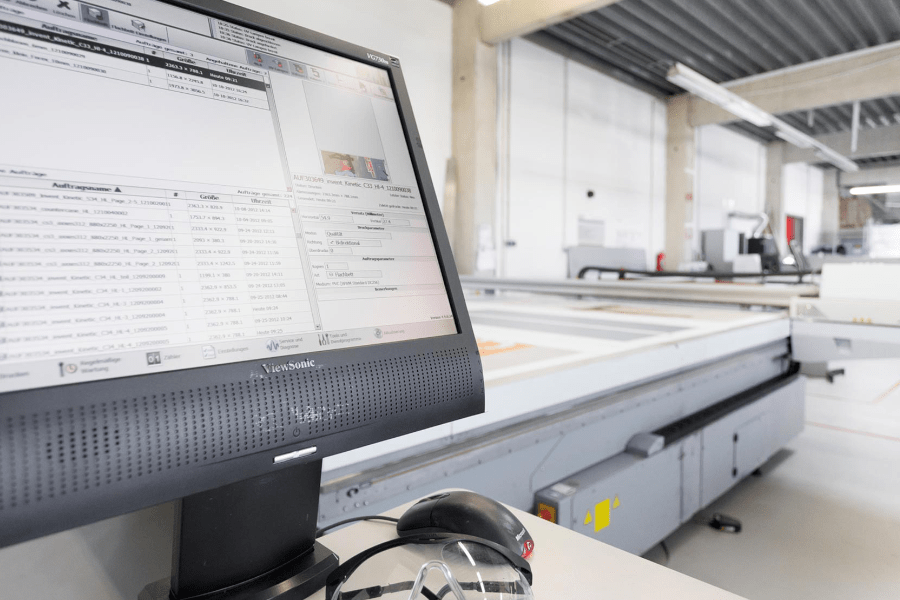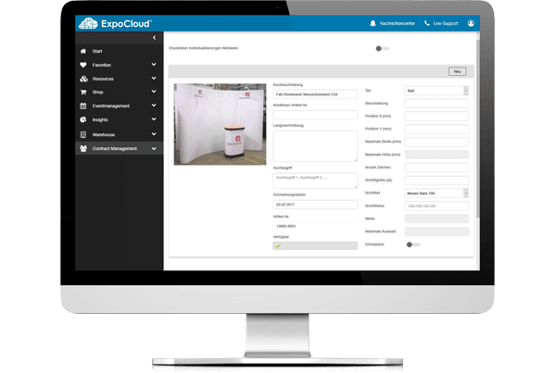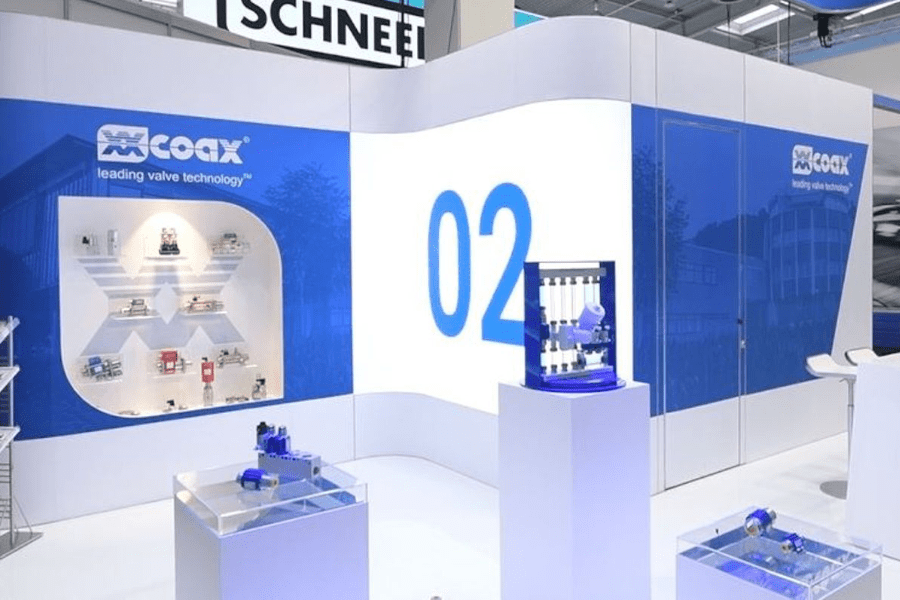Trade fair graphics - print versus digital
Digitalisation is a major topic in our society. It is virtually omnipresent and does not stop at any industry. It also has to be addressed in the...
4 min read
 Annalena Struever
:
Friday, 29. November 2019
Annalena Struever
:
Friday, 29. November 2019

Web-to-print and print-on-demand. What does that actually mean?
Print-on-demand (POD) refers to printing on request or on demand. This usually works on the basis of an online platform via which the desired data is stored/provided digitally.
Web-to-print (W2P or Web2Print) is the creation and processing of print jobs on the Internet. The data is then processed via digital printing.
Both processes belong together for the most part. Whereby POD is the process and W2P is the platform or provider where POD takes place.
In many industries, there is a trend towards customizing specific products rather than producing a product for the masses. Accordingly, many companies want to be able to address their customers individually and produce on demand. Together with a suitable IT solution, digital printing offers a great solution for this - whether as an in-house solution or in combination with a service provider.
Similar requirements arise in many industry sectors. From simple order forms and technical documentation to onboarding documents for new employees. In principle, all printed materials that arises during ongoing production can be printed on demand.

Ultimately, it is precisely these advantages and disadvantages that decision-makers weigh up between these two questions. In the free market, the principle of cost savings applies if the corresponding quantity is purchased - there is naturally a great incentive to order a larger quantity of a print run directly. However, when ordering large quantities, it is important to bear in mind that, in addition to production costs, storage costs also increase. And if even the smallest changes are made to a print product, the entire batch usually ends up in the paper waste by the pallet. It would therefore be conceivable to have individual print products produced depending on the requirements and market for the product.
Trade fair planning requires software that acts as a link between all the components:
First of all, the exact requirements and wishes must be discussed. As soon as this has been done, it is defined whether and which print products are stored as web-to-print, i.e. as an editable file, and which are stored online as a fixed print file. The online software therefore also functions as a print data archive and saves on actual storage space.
The ordering of online goods takes place via a simple ordering process. By defining the respective article in advance, it can be decided during the ordering process whether the order is a print order or an order with subsequent shipment to a desired address for the advertising materials stored in stock.
This process brings us to the point where web-to-print and print-on-demand differ. Using online-supported software, such as ExpoCloud, documents can be quickly changed and adapted by non-experts using web-to-print functions without technical design expertise thanks to stored CI rules.
Thanks to online processing, all order and production data is processed automatically. This can also reduce process costs (there is no need to search through emails or files). Print documents are available online in digital form and the production file can be downloaded via a cloud-based online portal by the service provider or the responsible print shop. The printed products are delivered taking into account the delivery address specified in the order and the desired delivery time. The delivery address can also be a central warehouse.
The best solution for print-on-demand and web-to-print would therefore ultimately be online-supported software that has the functions described. In addition, this should have 2-way logistics, through which advertising materials can be picked up again after events and added back to the stock once they have been returned to the warehouse. An associated event controlling system, if available, evaluates these figures and provides the user with an analysis of the materials used for the corresponding events or shipments. This analysis tool makes it easier to calculate how large the corresponding print run should be for future purposes.

Print-on-demand and web-to-print can have advantages and disadvantages. The disadvantages in particular have not yet been addressed.
Any bottlenecks can lead to delivery problems on the part of the service provider. In some cases, production may even take longer than by conventional means.
Here too, there is a risk that not all print products will be clean.
Investment costs must be incurred for setting up and operating the online-supported software.
Furthermore, the effort required to standardize the products offered in the online-supported software may be underestimated or a generally accepted consensus may not be reached within the company.
The solution should be sufficiently accepted by the relevant employees in the company, so the extent to which the use of the web-to-print or print-on-demand tool should be utilized should be discussed in advance. The product range should also be designed to be attractive.
However, the advantages of the solutions are also very clear.
Print-on-demand and web-to-print are suitable for short runs, but also for the production of business cards, for example. If the editable PDF print file is stored as a web-to-print file in the online-supported software, the respective customer can add their contact details to the file and order their personalized business cards.
The smaller print runs, adapted to the respective purpose, save resources.
Costs for transportation and logistics, particularly in terms of storage space, can be saved.
Reprinting the respective print product is possible without any problems.
The print product, whether flyer, brochure, magazine or similar, can be individualized for the appropriate purpose.
There are probably dozens of ways to describe print-on-demand and web-to-print using examples.
Ultimately, in today's fast-moving world, it is important to implement all calculations relating to event planning with the greatest possible time savings and maximum success. To achieve this goal, it is definitely helpful to use the support of an online-supported platform that includes the functions described and can cover all factors relating to the event with one piece of software.

Digitalisation is a major topic in our society. It is virtually omnipresent and does not stop at any industry. It also has to be addressed in the...

In the area of procurement of goods and services, it is not only a matter of deciding on the product range, quality, quantity and price, but also on...

Your trade fair planning is in full swing. How big will the stand be? What colours and elements should the stand have? Where will which exhibit be...